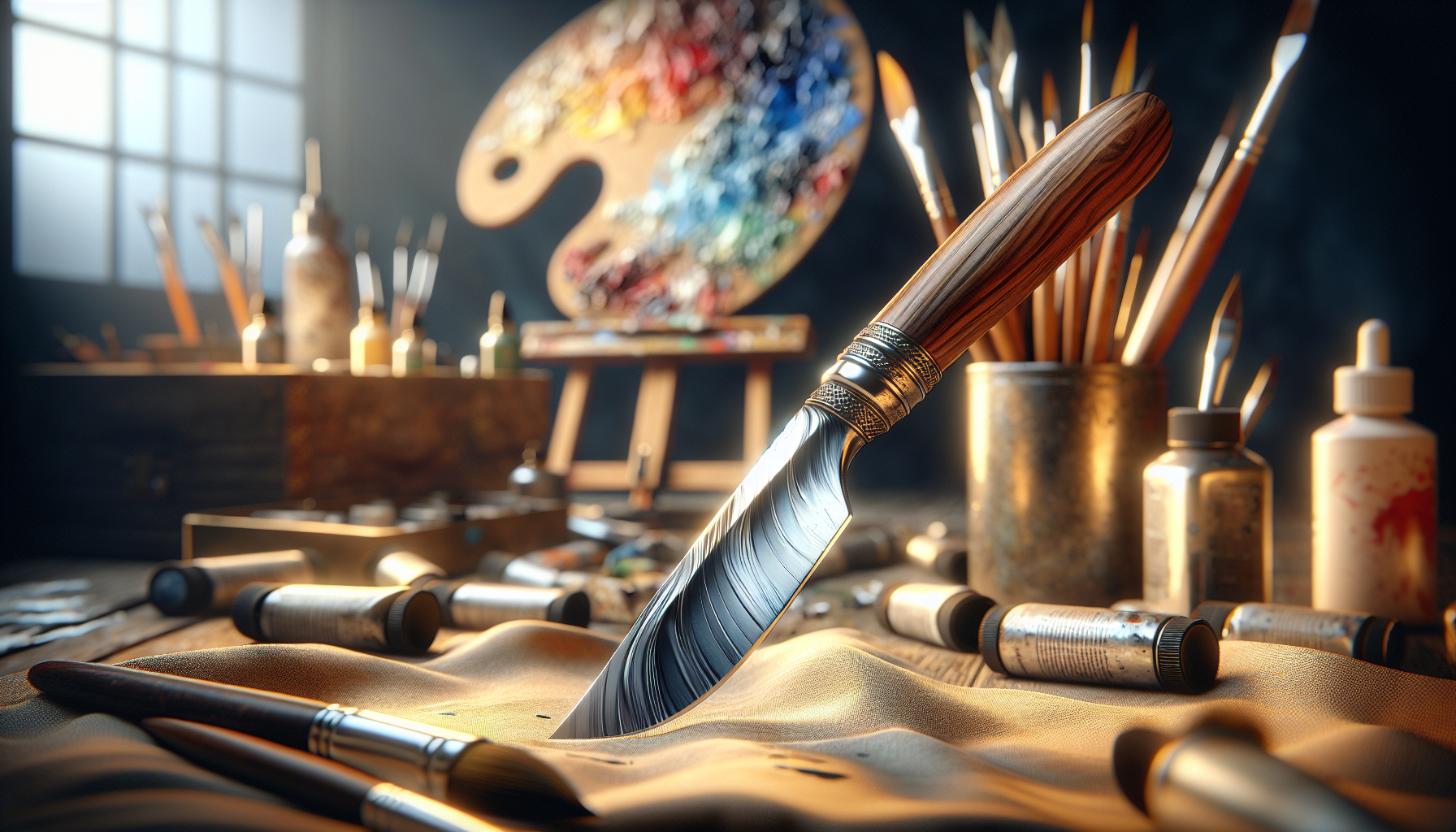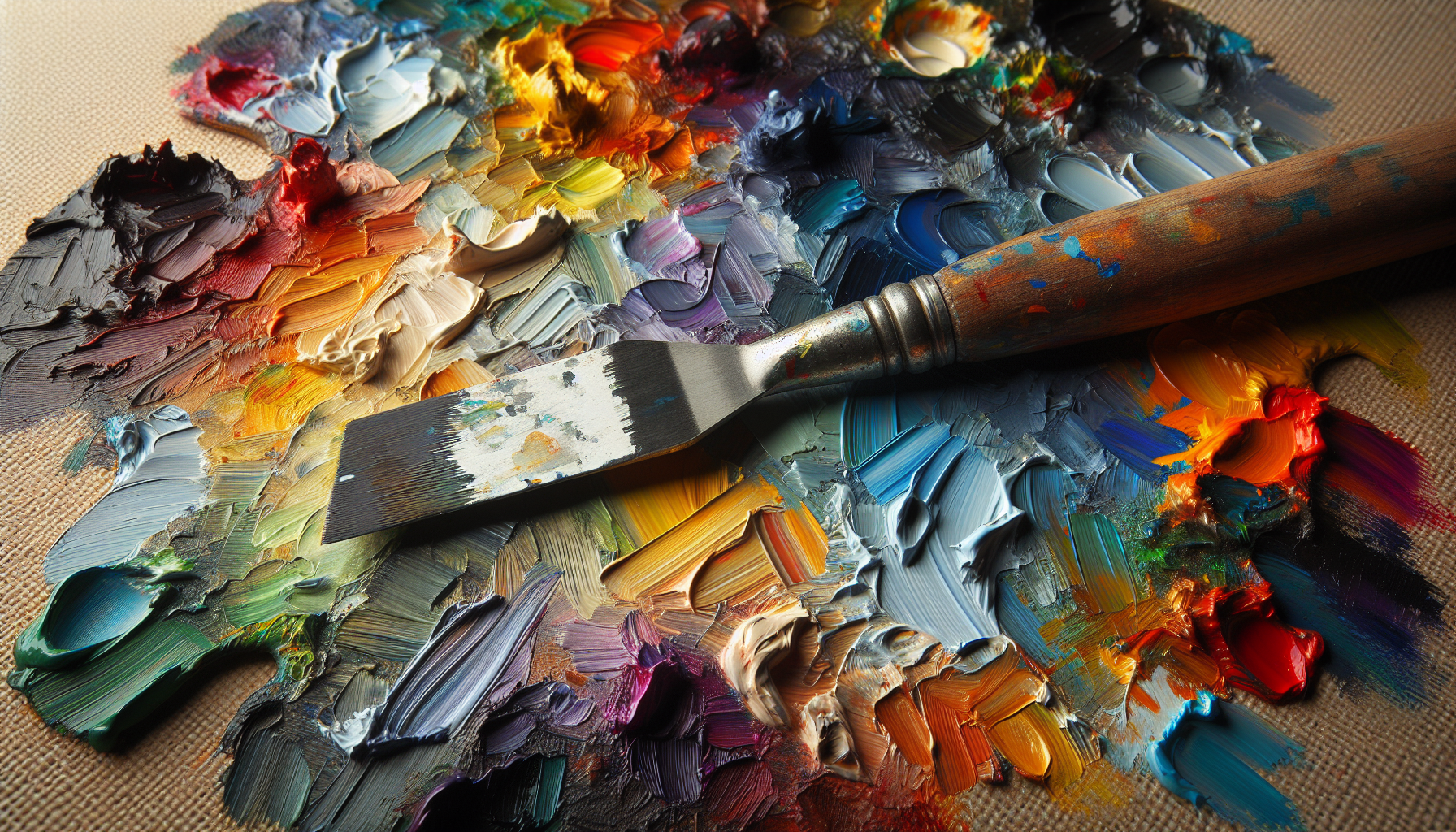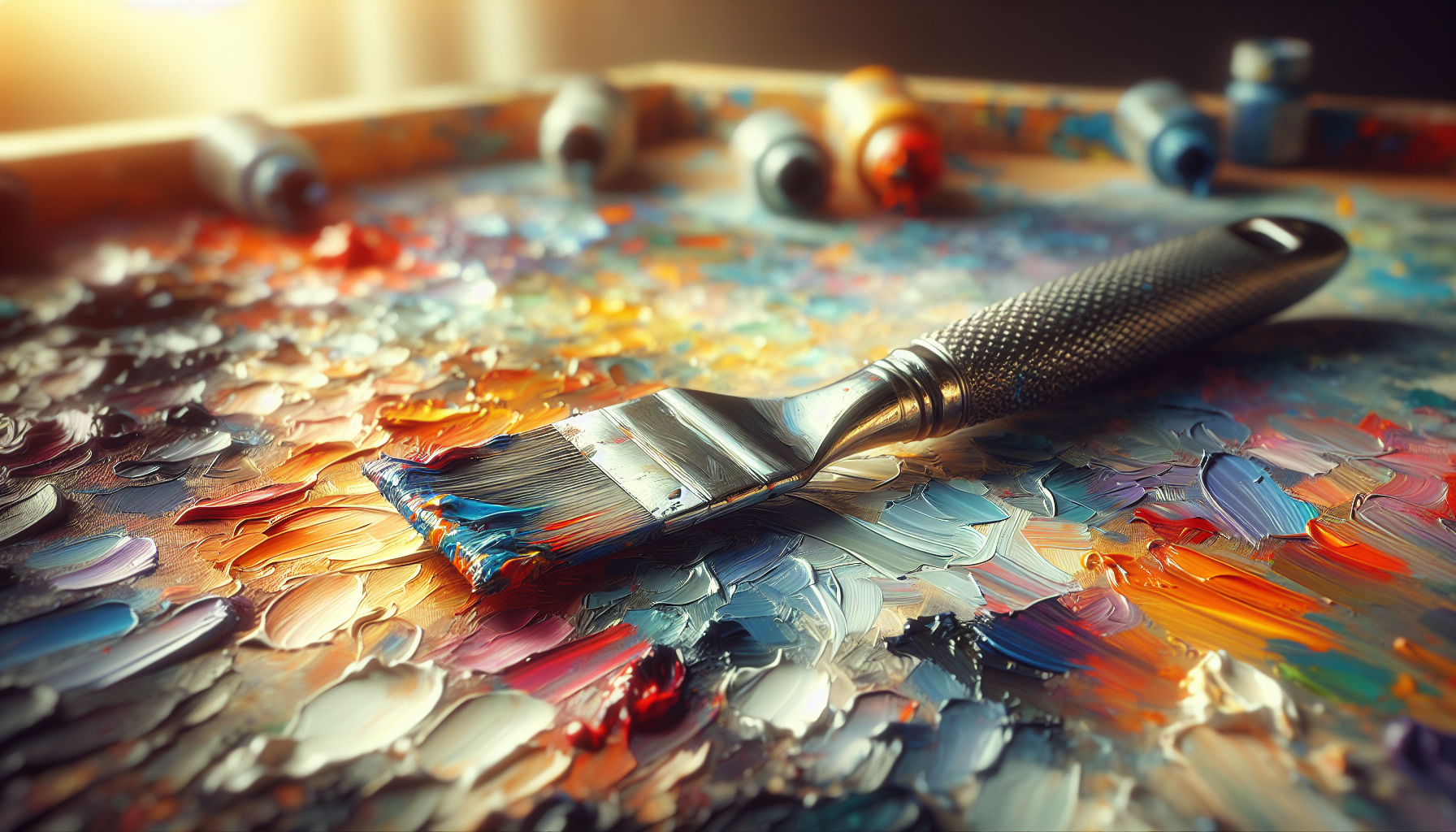Can the tools you use in art pose a risk to your safety? If you’ve ever questioned the safety of using palette knives in your creative endeavors, you’re not alone. Palette knives, known for their versatility and functionality in painting and other artistic activities, often spark debates regarding their safety. This comprehensive analysis aims to provide you with a thorough understanding of palette knives, examining their potential risks and offering insights for their safe use.
Understanding Palette Knives
To fully grasp the potential dangers of palette knives, you must first understand what they are and how they are typically used in artistic contexts. Palette knives are typically made of metal or plastic and have a flexible blade that is usually not sharpened. They are primarily used for mixing paint colors and applying textures to canvases in painting and various forms of art.
The Functionality of Palette Knives
Palette knives serve multiple purposes in the artistic process. They can be used to mix colors on a palette without the risk of contaminating paints, as is often the case with brushes. Furthermore, they allow artists to add texture to their art, enabling them to create impasto effects by applying thick layers of paint. Unlike brushes, palette knives provide a different level of control, offering unique expressions and finishes.
Types of Palette Knives
Various types of palette knives differ in size and shape, each serving distinct functions. Being aware of these differences is crucial for artists looking to achieve specific effects in their work.
| Type of Palette Knife | Description |
|---|---|
| Octagonal Knife | Primarily used for mixing paints rather than applying them. It has a rectangular, flat blade. |
| Trowel-shaped Knife | Offers a wide blade surface, making it ideal for broad application and larger strokes. |
| Offset Knife | Designed with an angled handle to keep hands away from the paint surface, ideal for larger strokes. |
| Pointed Knife | Has a sharp, pointed-tip for intricate detailing and creating fine lines. |
Evaluating the Safety of Palette Knives
When discussing the safety of palette knives, the risks are largely dependent on how they are used rather than the tools themselves. Importantly, while the blades are generally not sharpened, misuse can lead to accidents or injuries.
Potential Risks
The potential dangers associated with palette knives typically stem from three main factors: improper handling, defects in materials, and lack of awareness.
Improper Handling
One of the most significant risks of using palette knives is improper handling. This can lead to accidents such as cuts or puncture wounds. While palette knives are not inherently sharp, applying too much pressure or using the knife improperly can still cause injury.
Material Defects
Occasionally, palette knives might be constructed with subpar materials. Defective handles or blades can break during use, potentially leading to accidents. This is particularly true for cheaper models that do not have the same quality control as higher-end versions.
Lack of Awareness
Inexperienced users may not be fully aware of the potential risks, leading them to use palette knives irresponsibly. This lack of awareness can contribute to avoidable accidents, especially in educational settings where students might be experimenting with these tools for the first time.

Reducing Risk and Ensuring Safety
It’s crucial to implement safety measures and protective strategies to ensure that your use of palette knives remains free from harm. Proper handling techniques, quality material selection, and understanding the appropriate uses of the knives are fundamental steps in this regard.
Proper Handling Techniques
To minimize the risk of injury, ensure that you practice proper handling techniques. Hold the knife with a firm but gentle grip, and avoid applying excessive force. Be mindful of the direction in which you are working; always move the knife away from your body and hands to prevent accidents.
Inspecting for Quality
Before using a palette knife, inspect it for any signs of damage or inferior workmanship. A knife with a loose handle or bent blade should be set aside, as these deficiencies increase the risk of accidents. Investing in a high-quality palette knife can also mitigate the risk posed by poor construction and materials.
Education and Training
For beginners, education is key. Participant in workshops or consult tutorials to learn the craftsmanship and safety protocols associated with palette knives. Understanding the types of techniques that are best executed with palette knives will enhance your proficiency and reduce the chances of inadvertent injury.
Benefits of Using Palette Knives Safely
When used with attention and care, palette knives can significantly enhance your creative process. They provide an opportunity for artistic exploration that differs from traditional brushes, and their use is associated with several benefits.
Versatility in Art
Palette knives allow you to explore various styles and techniques that might not be achievable with brushes alone. The texture and impasto effects possible with palette knives enable you to broaden your artistic capabilities and aesthetic repertoire.
Improvement in Artistic Skill
Learning to use palette knives proficiently can also improve your overall artistic skill. The control and dexterity required to manage these knives translate to improved hand-eye coordination and precision, benefitting your broader skill set as an artist.
Enhanced Creative Output
By safely incorporating palette knives into your toolkit, you can enjoy an expanded range of expression. The tactile feedback and unique results achieved through knife painting and paint mixing can invigorate your creative output, promoting a more fulfilling creative experience.

Addressing Common Misconceptions
There are several misconceptions surrounding the use and safety of palette knives. Understanding these misconceptions will aid in your safe and informed use of the tools.
Palette Knives Are Only for Advanced Artists
It’s often believed that only experienced artists should use palette knives, fearing they are too complex or difficult for beginners. However, with the proper guidance and practice, artists of any skill level can benefit from their use. The key is to gradually introduce these tools into your work, starting with simple techniques and progressing to more advanced methods as your confidence grows.
Palette Knives Cannot Replace Brushes
While it’s true that palette knives won’t entirely replace brushes, they are not intended to do so. Instead, they serve to complement the capabilities of brushes, allowing artists to achieve a broader range of effects and styles in their artwork.
Conclusion: Responsible Use Leads to Reduced Risk
In conclusion, while palette knives can pose certain risks if misused, understanding their construction, proper handling techniques, and correct applications can greatly mitigate these risks. By selecting high-quality knives, receiving proper education, and adhering to recommended safety guidelines, you can enjoy the myriad benefits of working with palette knives without compromising your safety. These tools remain an invaluable part of the artist’s repertoire, contributing to the richness and diversity of the creative landscape.
By fostering a safe and informed environment, artists can continue to explore and create without the undue worry of harm. The world of artistic exploration is vast and exciting, and with palette knives as part of your toolkit, you can dive into this world with both creativity and confidence.


